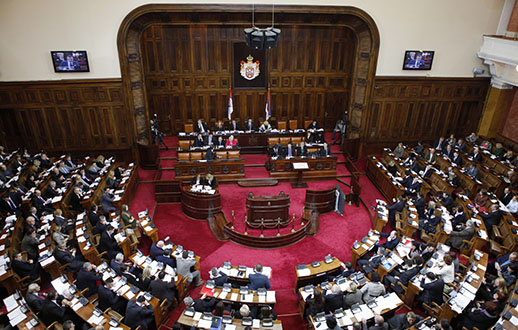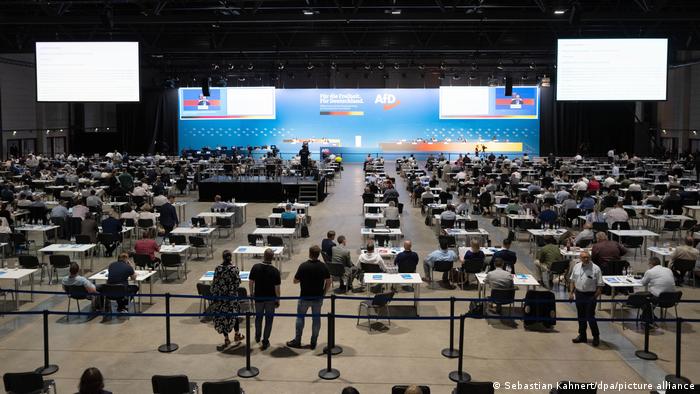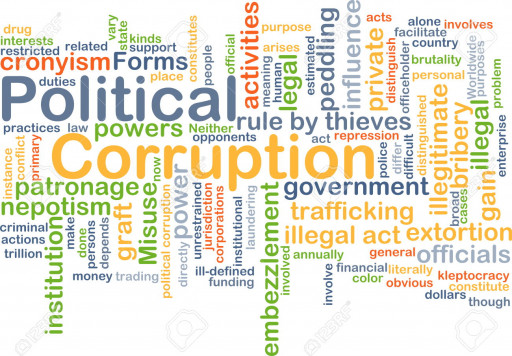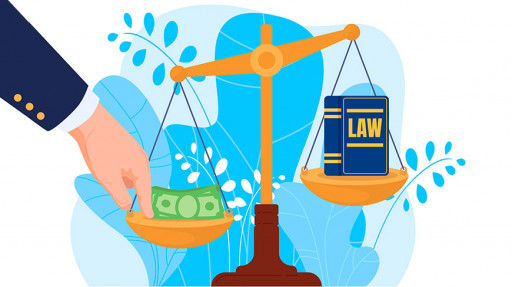For every political party, its members and especially candidates for responsible positions, the most important part is the elections. Each of the parties that enters the electoral race, it enters with the aim of winning the elections or winning as many seats as possible weather it is national or local level elections. According to the system in Serbia, the proportional system is applied, which means that the whole of Serbia is one electoral unit and that the greater the percentage of votes won, the greater the number of seats in the parliament party gets. That is why the question of the list of candidates is important for each party, which of the candidates will be in which position. Also, the way candidates are selected speaks about how the party functions, its transparency in work, the involvement of members in making important decisions and the degree of democracy in it. It is characteristic of Serbia that the parties are always as strong as their leaders, so the ways in which decisions are made should always be viewed in that aspect. Before we start analyzing the situation in Serbia, citing interesting examples of how candidates are selected and ranked, let's take a look at the theoretical foundations and what the professional literature says.

Political parties play a central role in political elections. They nominate candidates for the elections and define the politician that voters vote for in the elections. In practice, parties use different procedures to nominate their candidates, ranging from methods with fewer participants to democratic procedures. Political parties are considered one of the key political actors in modern democracies. They create a link between voters and politicians and provide the organizational infrastructure needed to enter and participate in political life.
In a theoretical sense, the method of selecting candidates for the parliamentary or local list can be divided into:
• closed (intra-party) decision-making
• candidate selection in a closed ballot
• candidates selection in an open type of voting (primary elections)
• technocratic approach
Closed (intra-party) decision-making: the first method for the party is to choose the candidates who are also the oldest. It usually involves a small group of people within the central of party (or parliamentary group, and sometimes the leader himself) who build a more or less complex election method that aims to maintain complete control over the selection of candidates. In many countries, this may seem like the least democratic principle, but it can have a serious impact on the election result. In countries where democracy is at a higher level, i.e. where voters decide on the basis of the party's program it can have a negative impact, but in countries where the political system is oriented more towards the party leader than the program it can have an important influence on a favorable result.
Candidate selection in a closed ballot: this method originated in early democratic systems as part of the parliamentary rules of leadership arrangement, where party members are asked to carry out the selection. A typical example of this electoral strategy is the "closed primary", which appeals to party members. Closed primaries have the added benefit of strengthening the party base and giving value to party membership, something that is increasingly important in an age when more and more citizens are hesitant to join a political party. But they can also reduce the party's electoral appeal; being elected by a relatively small group of people who are particularly active in politics (and often have very clear ideas about what policy options to take) is not the same as being elected by a much larger group of people.
Candidates selection in an open type of voting (primary elections): A more recent phenomenon, the system of open primary elections originated in the USA and since the early 2000s has spread to parts of Europe, such as Italy and France, as well as Lithuania. An open primary system has the merit of increasing voter turnout and thus appears to sidestep the most common criticism of a closed primary system - more voters should ensure that a candidate can start with a larger base of support before facing the electorate as a whole. However, this more democratic system has faced harsh criticism since its introduction, ranging from vulnerability to manipulation and dilution (via the involvement of activists from other parties who would try to push through an unelected candidate) to the idea that open primaries do little to improve a candidate's credibility.
Technocratic approach: one relatively new approach consists of leaving the candidate selection process to an independent, sometimes professional structure in order to adopt recruitment tactics similar to those in the private sector. This approach was chosen by Greece's New Democracy as it reorganized to regain power in 2019, and a similar – albeit less professional – approach was taken by Emmanuel Macron's La Republikue En Marche to choose the parliamentary candidates for his 2017 run for the French presidency. This method of selection has the merit of introducing a meritocratic approach to politics, but it is also less democratic and risks depoliticizing a process that is itself highly political.

Based on this rough division, we see that not a single model is ideal, each has its advantages and disadvantages, and in the end, it's up to the party leadership to try to find the most suitable candidate selection method, to adapt and adopt it. Let us note that this is a process that does not mean that once the method is chosen permanently, it is preferable to create a model that will be changed and improved over and over again. It is also important to say that the process of selecting candidates to be elected depends on many factors: the political system in the country, tradition, history, cultural heritage, the degree of parliamentarism and democracy in society, the size of the party and the very goal that the party wants to achieve, the results in the elections that took place. When we talk about Serbia, it will also depend on the strength of the leader himself, his popularity within the party and the level of confidence the membership has in his decision-making. In this sense, candidate selection methods are by no means a menu from which one can simply choose, but rather a continuous process in which each choice must be rationally analyzed after each choice in order to correct shortcomings and consolidate successes.
According to certain authors, the concept of choosing a candidate should actually answer the following questions: 1. Who can be elected? Are there certain restrictions on the selection of candidates?; 2. Who selects the candidates? Are there any restrictions in the candidate selection process? What is the size of the selectorate?; 3. Where are candidates selected? Are they elected at national or local level?; 4. How are candidates nominated? Is it decided by voting or appointment?
Today in the world there is a growing trend of democratization of the process in the selection of candidates within the parties, which means that we are moving in the direction of applying preliminary elections. Three main explanations for why parties decide to use primary elections can be found in the literature. First, they can avoid costly internal conflicts. Second, they can help the party improve the quality of its candidates (selection effect). Finally, they can increase internal competition and create an incentive among candidates to exert more effort during the election campaign (incentive effect). Recent empirical evidence from research finds a positive relationship between intra-party divisions and primary adoption consistent with the argument that costly internal conflict can be avoided in primary elections.
Research suggests that parties can adopt primary elections as a model to encourage more intraparty competition and elicit more effort from candidates during a general election campaign. Increasing effort can be interpreted as more investment in policymaking, but it can also refer to any activity that : 1) is done before the nomination process and 2) improves a candidate's electoral performance, such as fundraising, campaign spending, or recruitment of political advisers. The remaining question is whether greater efforts associated with primaries translate into better political and economic outcomes for voters. This question, although beyond the scope of this paper, requires further research.

Every party that participates in the elections in Serbia enters the election race to win or at least to become part of the parliament. In order to analyze the situation in Serbia, we must bear in mind that the electoral system in Serbia is proportional and that when it comes to the election of deputies and councilors, the number of mandates awarded to persons on the list is determined based on the percentage of votes won. The electoral threshold in Serbia is currently 3%.
Each party is preparing in the best possible way in this race. That's why they always try to put important members on their list, if it's a question of smaller parties, the party leadership and members they choose based on pre-agreed party procedures must go on the list. In addition to party figures, the list includes public figures from the world of culture, sports, science, education, and business, which emphasizes that the party has support among the population. Mainly for Serbia, it could be said that the method of closed voting system is applied in the selection of candidates for the parliamentary or local list. It implies that the number of candidates on the list nominated by local party committees is divided, the number that is filled in by the main body of the party and at the end everything is harmonized and adopted by the members of the main committee or the party assembly, which makes the list final. Every party that is supported at the national level tries to have candidates from the whole country on its list, ie. that all districts be covered, if not all municipalities (for the parliament, it is 250 candidates), and if municipalities are in question, that they be covered evenly from the entire territory of the city/municipality. In this way, voters are sent a message that the party represents the interests of all citizens. If it is a question of smaller parties or movements, the list mainly includes candidates from the territory where the party is registered or the strongest (mostly these are candidates from Belgrade or a certain municipality if the movement originated in a city outside of Belgrade).
The coalition method is often used in Serbia so that parties that are smaller in terms of membership and strength gain the condition to pass the census. In the past, there was an attempt to form a party called "United Regions" where, in addition to the G17+ party that was the project's leader, local movements and parties from cities such as Kragujevac, Trstenik, Zaječar and others were included. They wanted to talk about equal representation of all regions in politics of Serbia, National Assembly etc.. Unfortunately, the political system itself is such that the candidates who are at the top of the list enter the parliament, and it often happens that the largest percentage (even over 40%) are candidates from Belgrade when the entire parliament is analyzed. Such phenomenon can discourage voters from supporting projects like "United Regions" after one mandate, which is often too short for the idea of regionalization to be implemented. That's why we've been hearing lately in parliament, especially from members of the opposition, that the electoral system should be changed, but for now, none of the supporters of this idea have a vision of what kind of system would be best.
It is important to note that when registering the candidate list of party, voters can have an overview of all candidates from the list, their education and profession, which is published on the website of the Republic Election Commission. It helps the voters when deciding who to support to better inform themselves about the potential candidates who represent them, which may influence the decision, but certainly will not decide. As we said at the beginning, Serbia has a characteristic model according to which parties and the party's program are supported based on the strength and trust they have in the leader of that party, and not so much on the basis of the program that the party offers.
It is interesting to mention that in Serbia there was an attempt of a new model of nomination of candidates for the elections. Namely, after the announcement of parlamentary elections in 2016, the Enough is Enough movement (Dosta je bilo) tried to create its own list by announcing a public invitation for all citizens to be on their list. The condition, of course, was that they provide people who will support that list. The criteria for the selection was never completely clear, but it is assumed that the number of people gathered who will give their written support had an impact on the ranking and in general the selection of candidates for the list. In the end, the list did enter the assembly and remained in that mandate, but due to poor transparency, strife within the movement, this idea never took off nor was it implemented again by any organization.

As we have seen, there are four rough models that political parties around the world use today in the candidate selection process. The models go from completely closed, where the decision is up to the party leadership, to the application of the primary election model, which is democratic and includes the largest number of people, who are not even members. Recently, there is more and more talk about the technocratic model of candidate selection, which should enable the best selection of candidates in accordance with the set criteria, which has given results, but leads to the loss of democracy in the selection process and the political component of the election. Serbia is not an exception, and based on the analysis of political circumstances, we see that a form of closed method of candidate selection is being implemented. There was an attempt by the Enough is Enough movement (Dosta je bilo) to innovate this system by opening a public competition for the selection of candidates, but due to the low transparency of the election process and the poor results that the movement achieved during its mandate in the parliament, the very idea failed. Of course, parties change and adapt these models, but all this should be seen in the aspect of the political system, party leadership, goals, election results, as well as history, the level of democracy in society, the history of parliamentarism and other important factors in society. At the end of this text, we can certainly conclude that there is no ideal candidate selection model, which does not mean that a party for a certain electoral process cannot create the one that best suits the given circumstances.







